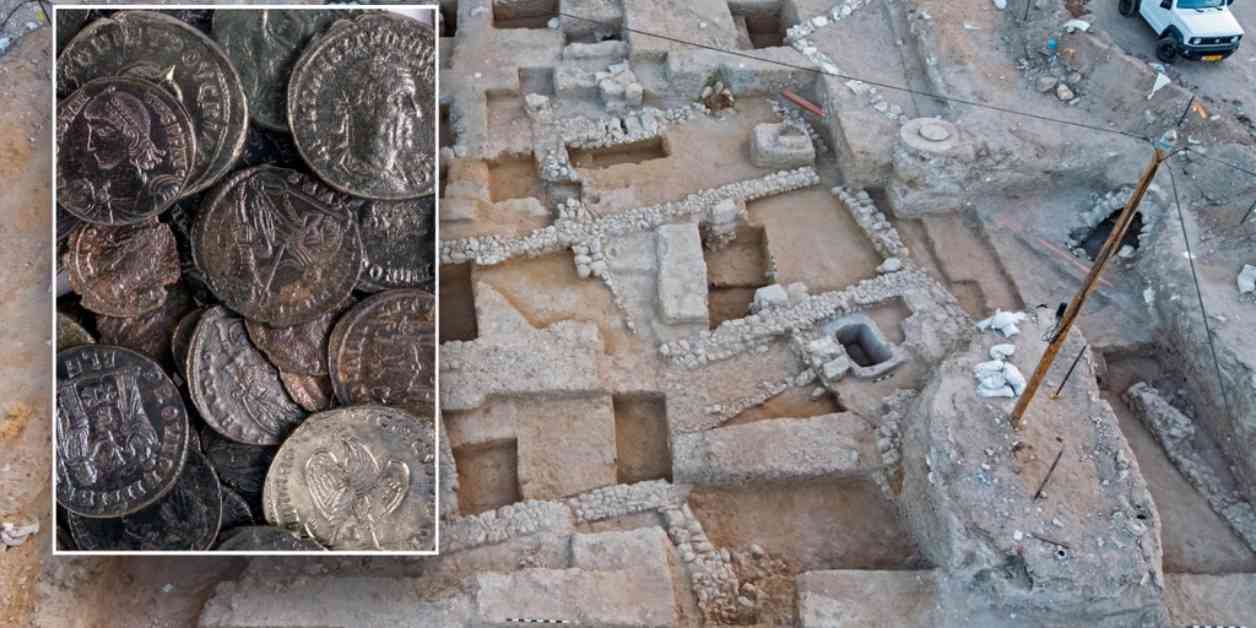Archaeologists in Israel have made a significant discovery that sheds light on Jewish life in ancient Roman-era Israel. The Israel Antiquities Authority (IAA) recently announced the excavation of a site in Lod, central Israel, where the remains of a destroyed Jewish public building were found. This building is believed to have once stood in Syria Palaestina, or Roman Palestine, and was associated with the Jewish community.
Among the discoveries in this building were impressive stone and marble artifacts, as well as Greek, Hebrew, and Latin inscriptions. One inscription even bore the name of a Jewish man from a priestly family. The absence of pig bones in the bone assemblage further confirms the Jewish connection to this building.
During the excavation, a hoard of 94 ancient coins, dating back approximately 1,650 years, was uncovered. These coins are believed to date back to the time of the Gallus Revolt (351-354 CE) against Constantius Gallus. Historical texts suggest that major Jewish communities like Lod were destroyed during this revolt, and the oldest coins found in the cache could have been hidden as early as 221 AD.
Two of the excavators, Shahar Krispin and Mor Viezel, described the building as a living quarters for the city’s Jewish elders. It is believed that Lod was a significant Jewish center after the destruction of the Second Temple in Jerusalem. The discovery of this building indicates that the revolt was forcefully suppressed with violence and was not merely a local uprising.
The mayor of Lod, Yair Revivo, expressed his emotional connection to the discovery, emphasizing the city’s rich Jewish history. Professor Joshua Schwartz of the Israel Antiquities Authority Council highlighted the significance of the find, raising questions about the building’s function, whether as a synagogue, study hall, or meeting place for elders.
The discovery in Lod adds to the city’s historical importance as a center of Torah-true Jewish life during the Mishna and Talmud periods. The findings provide valuable insights into the ancient Jewish community’s resilience and cultural significance in the face of external threats.
As we continue to uncover ancient treasures like these, our understanding of the past grows, enriching our knowledge of the diverse histories that have shaped the world we live in today.




